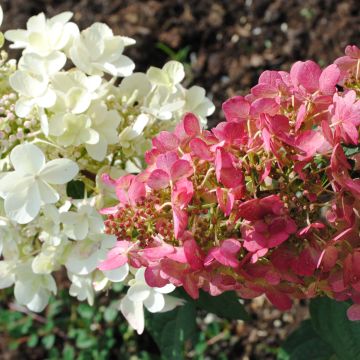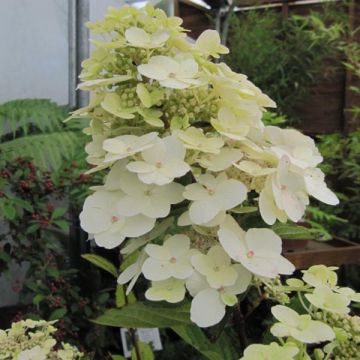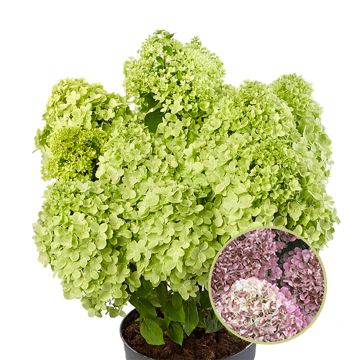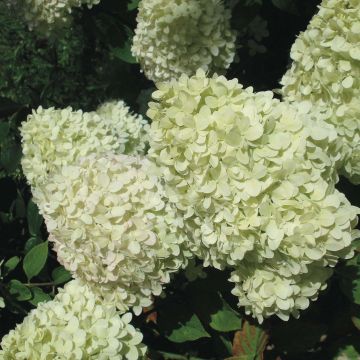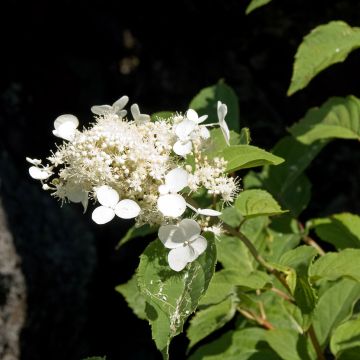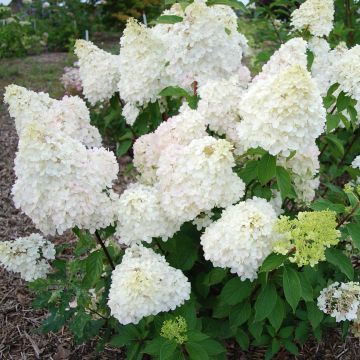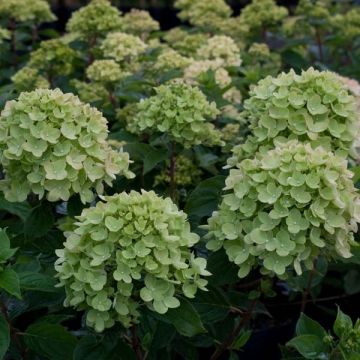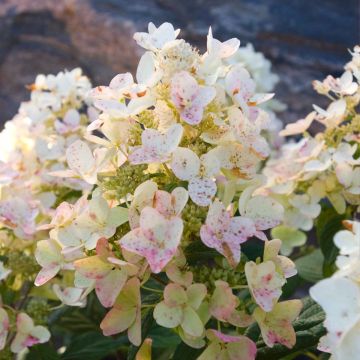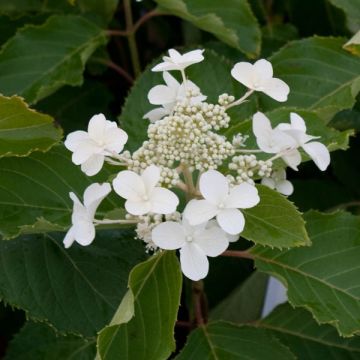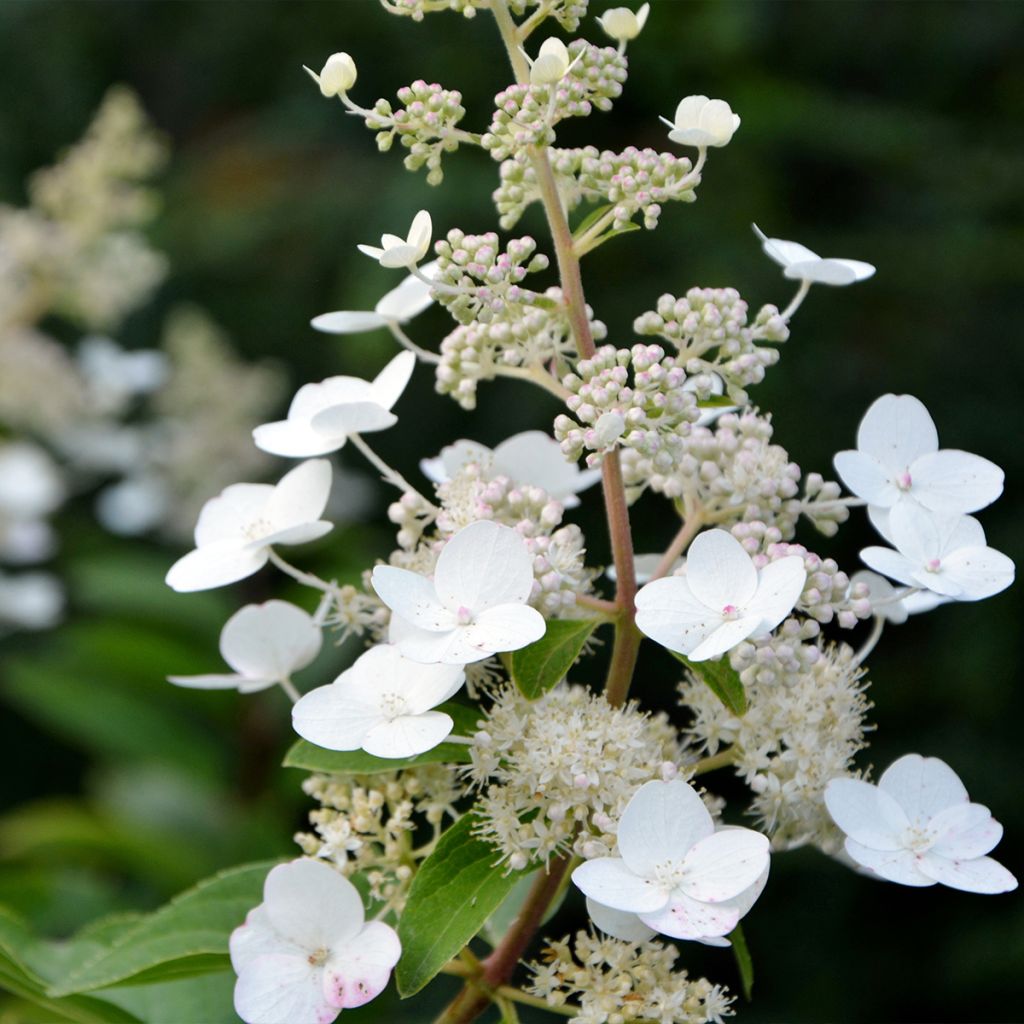

Hydrangea paniculata Tardiva
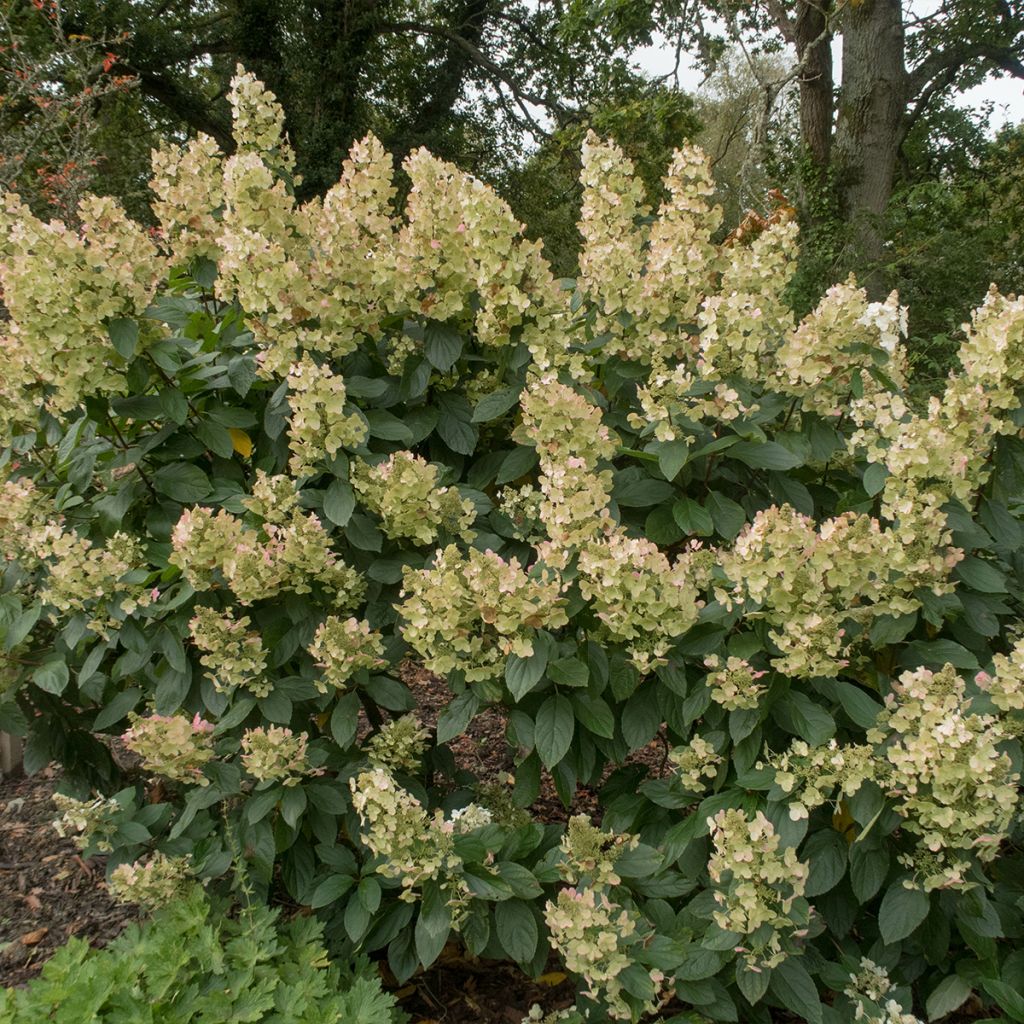

Hydrangea paniculata Tardiva
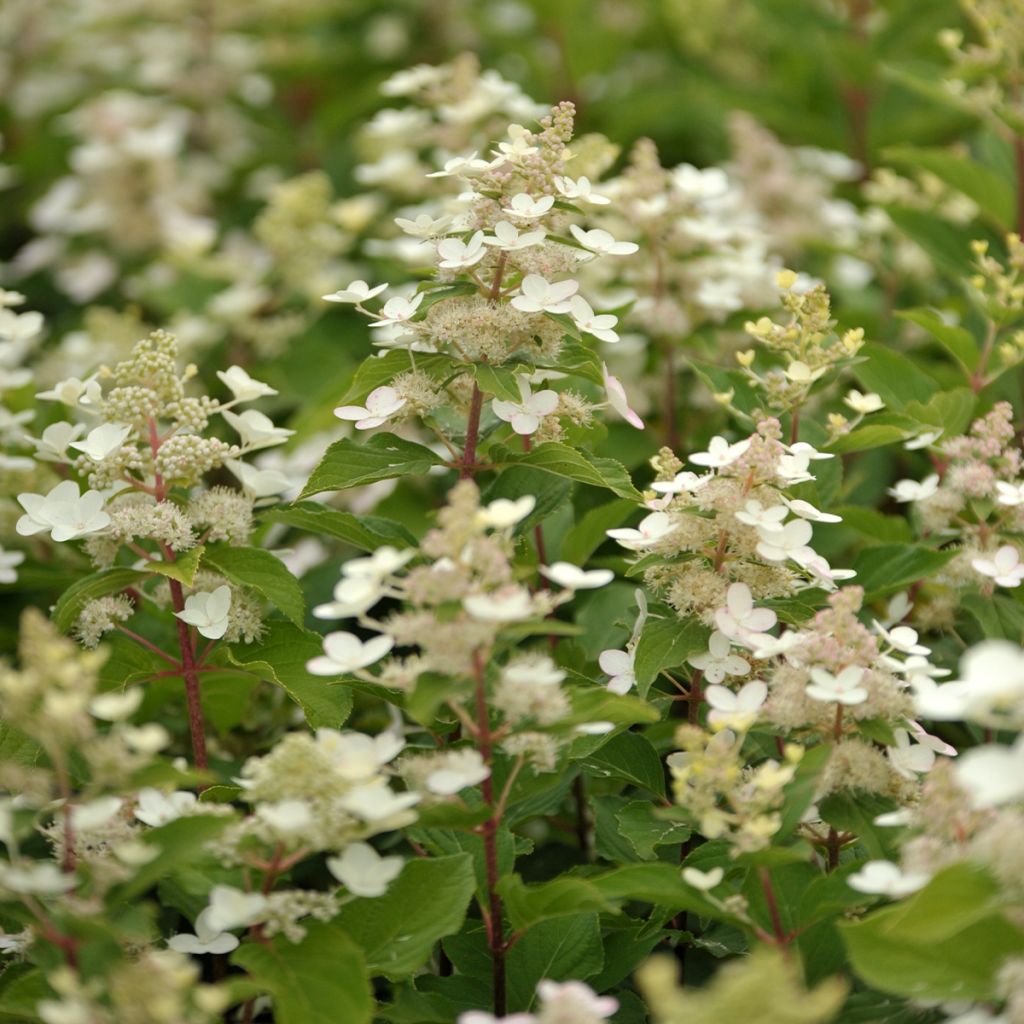

Hydrangea paniculata Tardiva
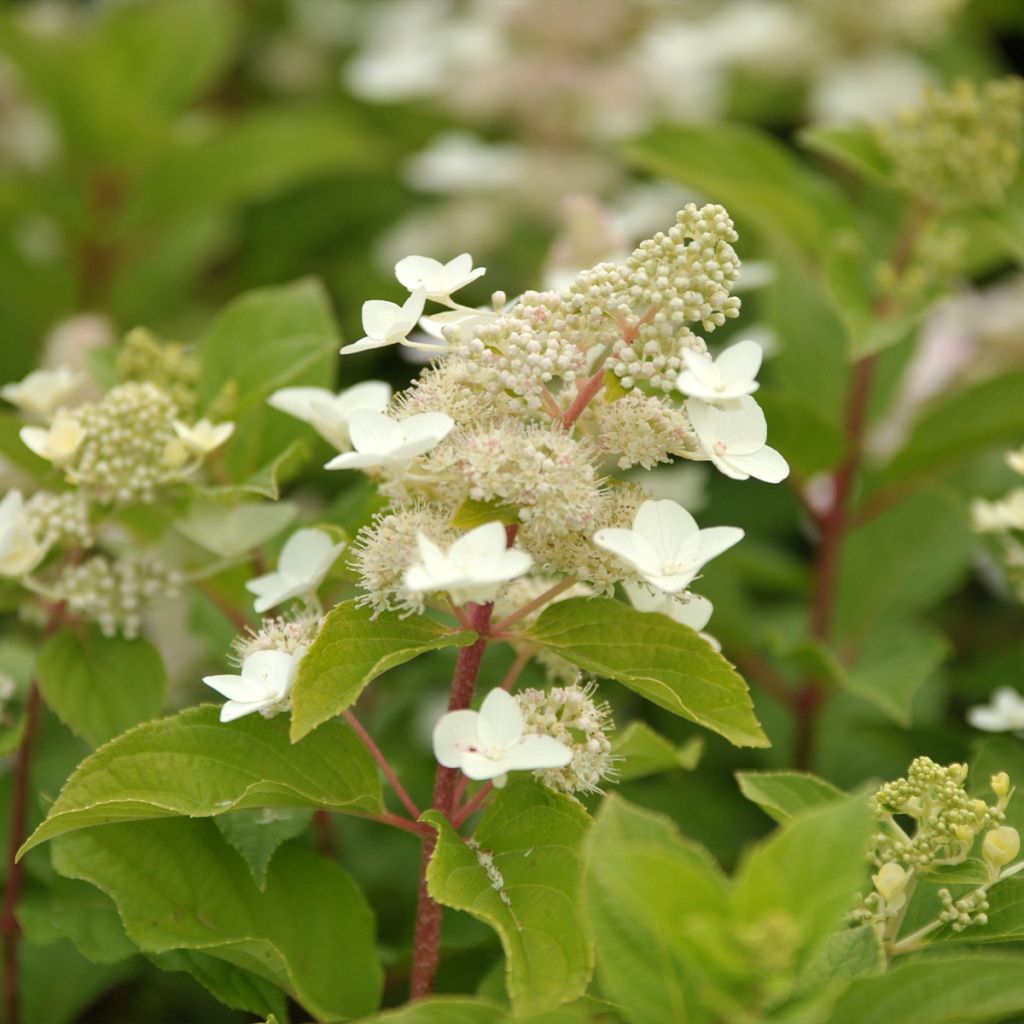

Hydrangea paniculata Tardiva
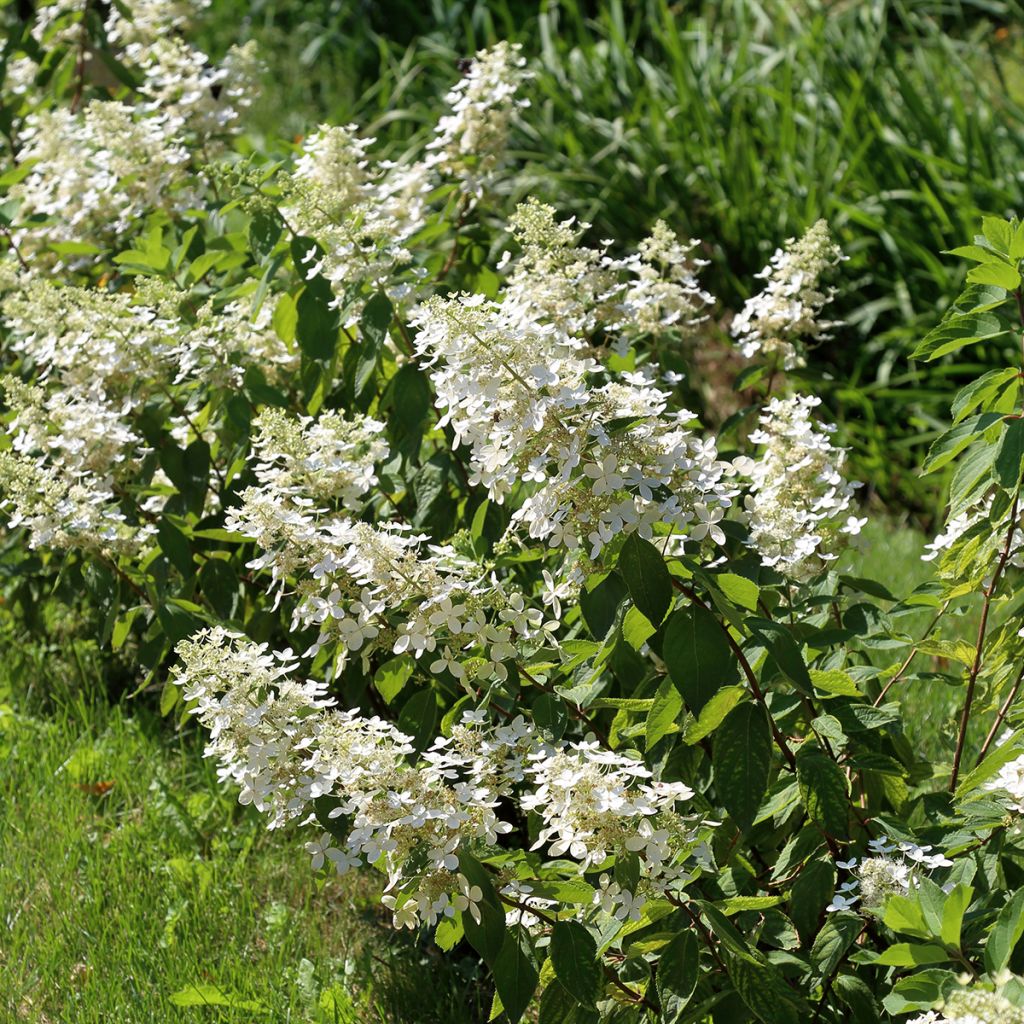

Hydrangea paniculata Tardiva
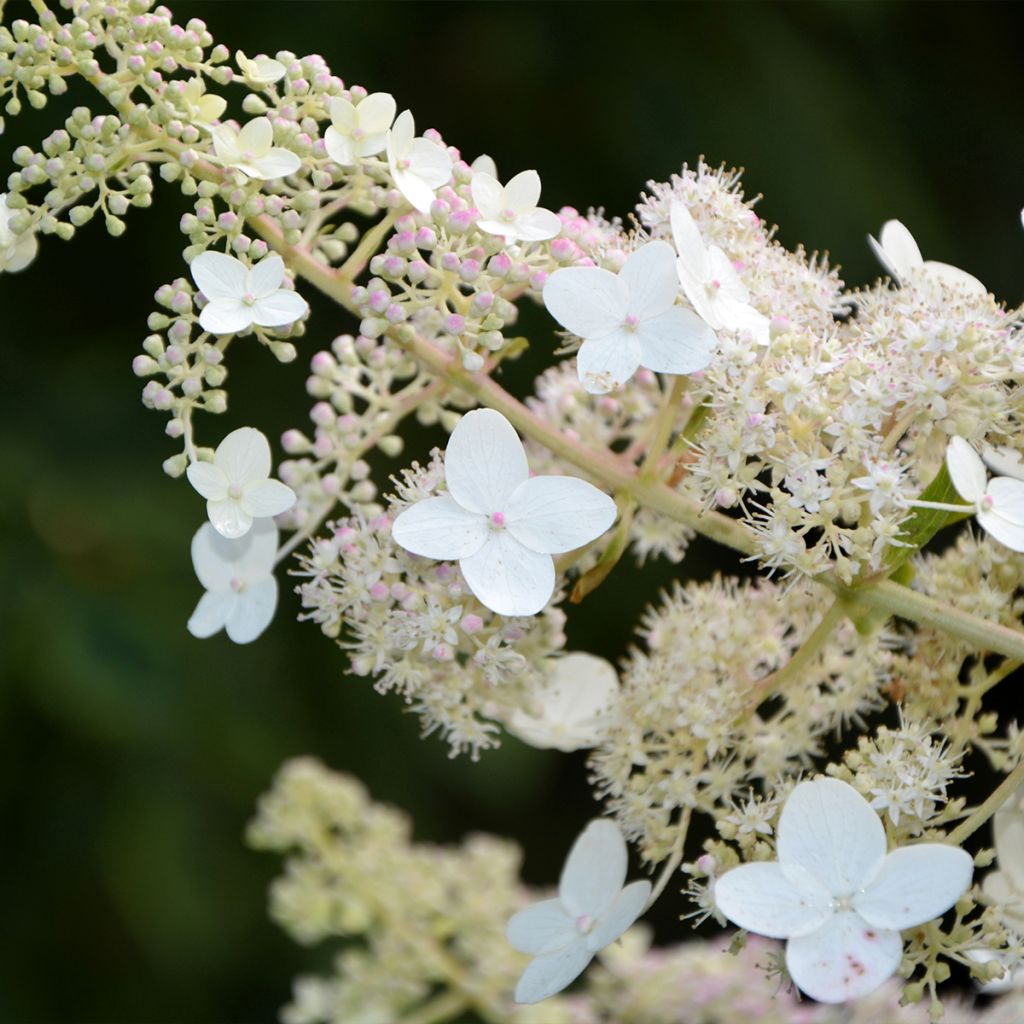

Hydrangea paniculata Tardiva
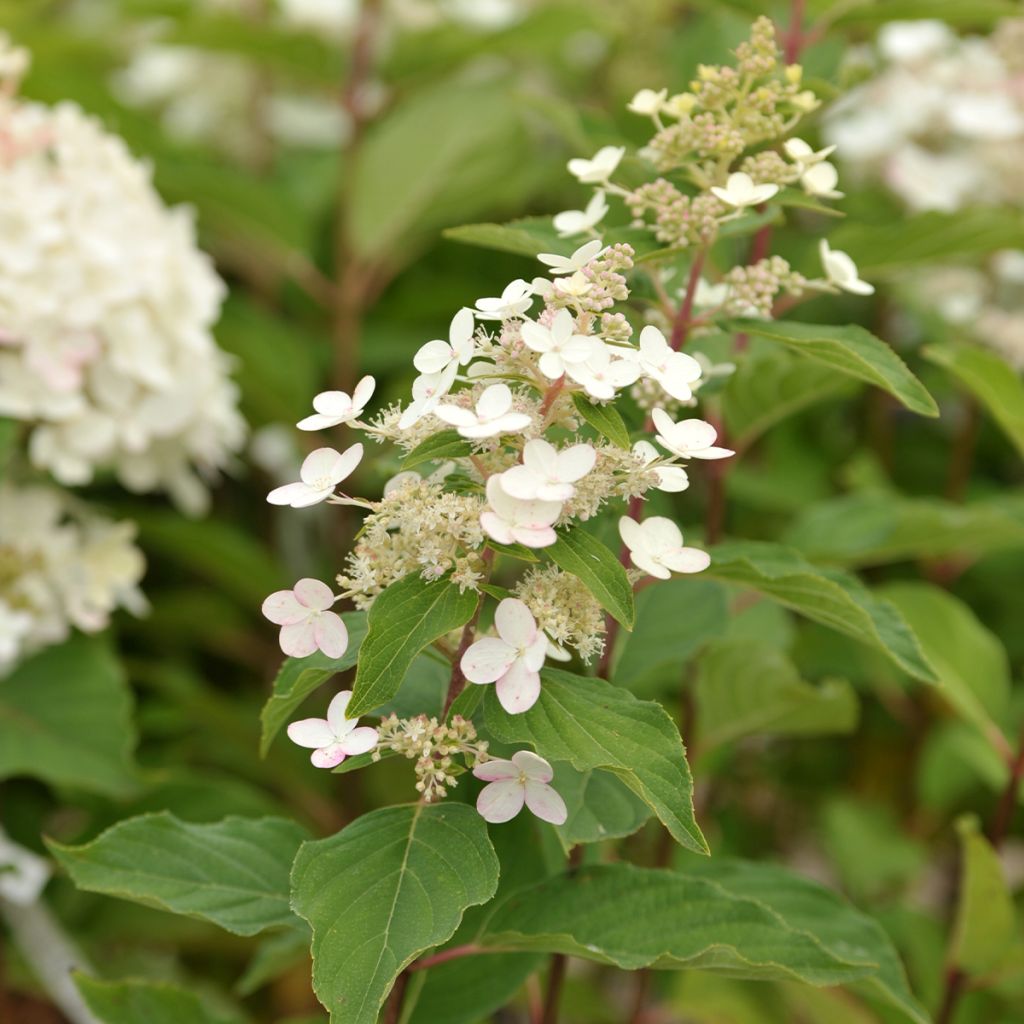

Hydrangea paniculata Tardiva
Hydrangea paniculata Tardiva
Hydrangea paniculata Tardiva
Paniculate Hydrangea, Panicled Hydrangea, Panicle Hydrangea
This item cannot be shipped to the selected country
Delivery charge from €5.90
More information
Schedule delivery date,
and select date in basket
This plant carries a 24 months recovery warranty
More information
We guarantee the quality of our plants for a full growing cycle, and will replace at our expense any plant that fails to recover under normal climatic and planting conditions.
From €5.90 for pickup delivery and €6.90 for home delivery
Express home delivery from €8.90.
Does this plant fit my garden?
Set up your Plantfit profile →
Description
Hydrangea paniculata 'Tardiva' is a variety of large paniculate hydrangea, characterised by its late flowering. It produces its large inflorescences only in the middle of the summer, when its large white cones dominate its beautiful medium green foliage. It should preferably be placed at the back of a flower bed. Accommodating in terms of soil, not requiring heathland to grow, it is satisfied with a neutral or even slightly chalky soil, provided it does not dry out too much. Very hardy, it is the ideal hydrangea for beginners in the garden.
Hydrangea paniculata, also called Paniculate Hydrangea, is a species of hydrangea belonging to the Hydrangeaceae family originating from the leafy forests of China and Japan. Growing in these natural environments up to 2000 m (6561 ft) in altitude, it is particularly hardy. It is easy to grow in any good slightly damp garden soil, not requiring heathland to develop.
The 'Tardiva' variety obtained in the 1970s stands out among the H. Paniculata group due to its being among the latest to flower. At the end of July or in August, curious elongated inflorescences appear at the end of branches, composed of sterile flowers at the bottom and fertile flowers at the top. About 25 cm (9.8 in) long, they form beautiful white cones that stand out from afar on the mass of foliage from which they clearly protrude. This rather spectacular flowering lasts all the rest of the summer, even until October. An imposing shrub which can reach up to 3 m (9 ft 10 in) high under good conditions, it can form flower beds on its own in parks or border hedges for the summer season. Its deciduous foliage falls in autumn. If used in a flower bed, it should be placed in the background so that its medium green foliage highlights its light flowers.
Hydrangea paniculata 'Tardiva' is the ideal hydrangea for all gardeners frustrated at not being able to plant Hydrangea macrophylla, due to not having the right soil and climate. It will be appreciated for its long flowering period, which can even be further extended in the form of dried bouquets. In the garden, it can be planted alongside a wide range of shrubs. Its large size makes it suitable to be placed in the background, where it will constitute a perfect backdrop for bright spring flowers, like that of the wonderful Spiraea cinerea Grefsheim, or Dentate Spiraea, with its flexible branches covered with white flowers. Weigela florida 'Magical Rainbow', with its variegated yellow foliage, will also form a superb contrast in front of this 'Tardiva' Hydrangea.
Report an error about the product description
Hydrangea paniculata Tardiva in pictures
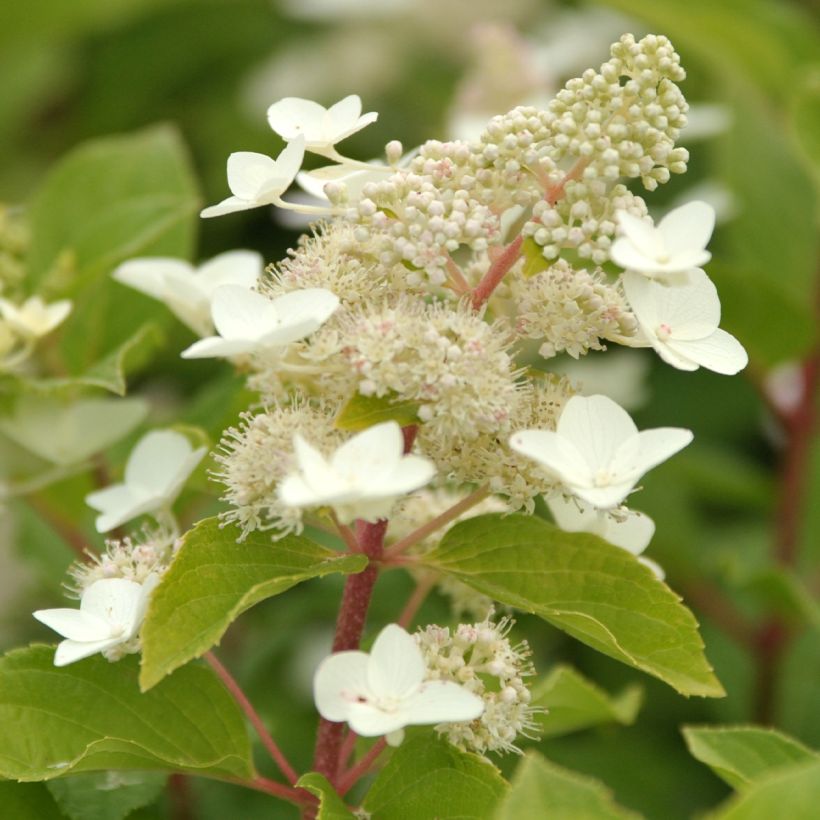

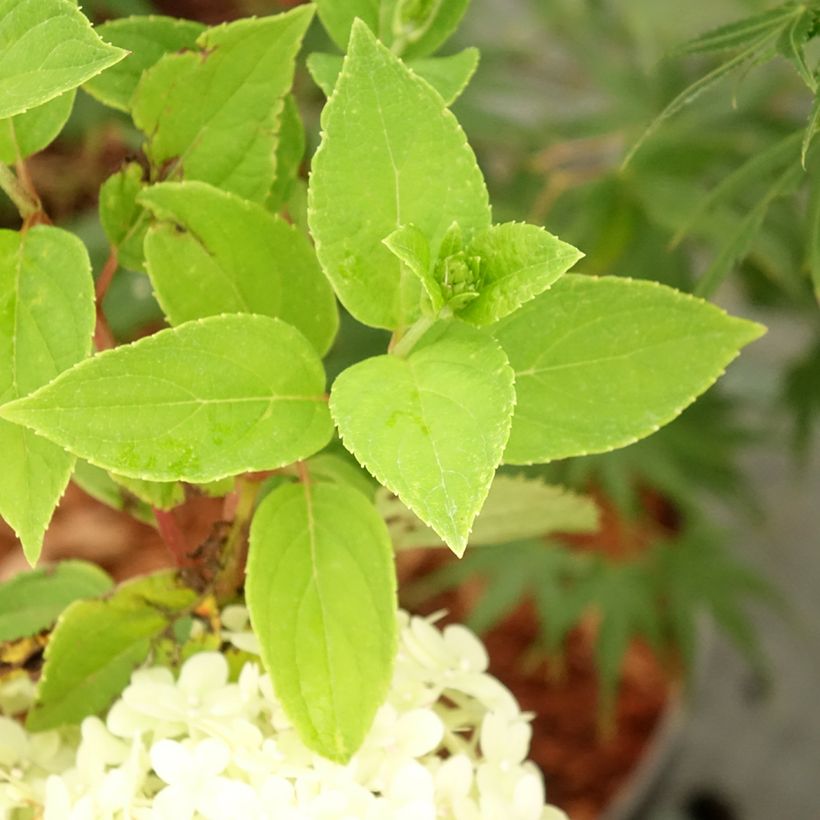

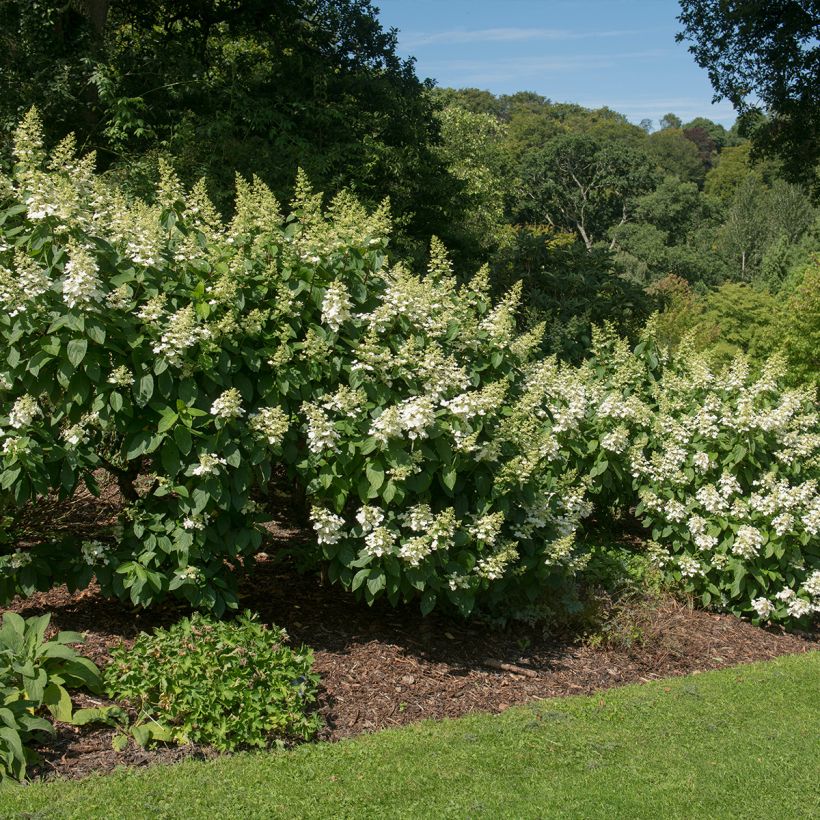

Plant habit
Flowering
Foliage
Botanical data
Hydrangea
paniculata
Tardiva
Hydrangeaceae
Paniculate Hydrangea, Panicled Hydrangea, Panicle Hydrangea
Cultivar or hybrid
Other Hydrangea Paniculata
Planting and care
Hydrangea paniculata Tardiva is not very demanding about the nature of the soil, as long as it is not too heavy. It does not require heath soil but grows in neutral soil and even tolerates a bit of limestone. It also accommodates sandy or rocky soil as long as it remains a bit fresh, or well watered. In such conditions, it would be good to add compost at the base of the shrub each year.
It requires a sunny, non-scorching or semi-shaded exposure. When planting, install it in a deeply worked soil, after having soaked the root ball for half an hour in a bucket of water. A good base fertiliser (horn or dehydrated blood) will help your young plant recover and nourish it without risk of burning. If your soil is dry, mix compost with the soil while refilling the planting hole and plan a watering basin on the surface.
At the end of summer, we advise you not to cut the dry panicles, which will protect the terminal shoots of the branches in winter. You should cut all the dry flowers at the end of February or on the first fine days and remove some branches by cutting them very short each year, to encourage the growth of new shoots.
Planting period
Intended location
Care
This item has not been reviewed yet - be the first to leave a review about it.
Haven't found what you were looking for?
Hardiness is the lowest winter temperature a plant can endure without suffering serious damage or even dying. However, hardiness is affected by location (a sheltered area, such as a patio), protection (winter cover) and soil type (hardiness is improved by well-drained soil).

Photo Sharing Terms & Conditions
In order to encourage gardeners to interact and share their experiences, Promesse de fleurs offers various media enabling content to be uploaded onto its Site - in particular via the ‘Photo sharing’ module.
The User agrees to refrain from:
- Posting any content that is illegal, prejudicial, insulting, racist, inciteful to hatred, revisionist, contrary to public decency, that infringes on privacy or on the privacy rights of third parties, in particular the publicity rights of persons and goods, intellectual property rights, or the right to privacy.
- Submitting content on behalf of a third party;
- Impersonate the identity of a third party and/or publish any personal information about a third party;
In general, the User undertakes to refrain from any unethical behaviour.
All Content (in particular text, comments, files, images, photos, videos, creative works, etc.), which may be subject to property or intellectual property rights, image or other private rights, shall remain the property of the User, subject to the limited rights granted by the terms of the licence granted by Promesse de fleurs as stated below. Users are at liberty to publish or not to publish such Content on the Site, notably via the ‘Photo Sharing’ facility, and accept that this Content shall be made public and freely accessible, notably on the Internet.
Users further acknowledge, undertake to have ,and guarantee that they hold all necessary rights and permissions to publish such material on the Site, in particular with regard to the legislation in force pertaining to any privacy, property, intellectual property, image, or contractual rights, or rights of any other nature. By publishing such Content on the Site, Users acknowledge accepting full liability as publishers of the Content within the meaning of the law, and grant Promesse de fleurs, free of charge, an inclusive, worldwide licence for the said Content for the entire duration of its publication, including all reproduction, representation, up/downloading, displaying, performing, transmission, and storage rights.
Users also grant permission for their name to be linked to the Content and accept that this link may not always be made available.
By engaging in posting material, Users consent to their Content becoming automatically accessible on the Internet, in particular on other sites and/or blogs and/or web pages of the Promesse de fleurs site, including in particular social pages and the Promesse de fleurs catalogue.
Users may secure the removal of entrusted content free of charge by issuing a simple request via our contact form.
The flowering period indicated on our website applies to countries and regions located in USDA zone 8 (France, the United Kingdom, Ireland, the Netherlands, etc.)
It will vary according to where you live:
- In zones 9 to 10 (Italy, Spain, Greece, etc.), flowering will occur about 2 to 4 weeks earlier.
- In zones 6 to 7 (Germany, Poland, Slovenia, and lower mountainous regions), flowering will be delayed by 2 to 3 weeks.
- In zone 5 (Central Europe, Scandinavia), blooming will be delayed by 3 to 5 weeks.
In temperate climates, pruning of spring-flowering shrubs (forsythia, spireas, etc.) should be done just after flowering.
Pruning of summer-flowering shrubs (Indian Lilac, Perovskia, etc.) can be done in winter or spring.
In cold regions as well as with frost-sensitive plants, avoid pruning too early when severe frosts may still occur.
The planting period indicated on our website applies to countries and regions located in USDA zone 8 (France, United Kingdom, Ireland, Netherlands).
It will vary according to where you live:
- In Mediterranean zones (Marseille, Madrid, Milan, etc.), autumn and winter are the best planting periods.
- In continental zones (Strasbourg, Munich, Vienna, etc.), delay planting by 2 to 3 weeks in spring and bring it forward by 2 to 4 weeks in autumn.
- In mountainous regions (the Alps, Pyrenees, Carpathians, etc.), it is best to plant in late spring (May-June) or late summer (August-September).
The harvesting period indicated on our website applies to countries and regions in USDA zone 8 (France, England, Ireland, the Netherlands).
In colder areas (Scandinavia, Poland, Austria...) fruit and vegetable harvests are likely to be delayed by 3-4 weeks.
In warmer areas (Italy, Spain, Greece, etc.), harvesting will probably take place earlier, depending on weather conditions.
The sowing periods indicated on our website apply to countries and regions within USDA Zone 8 (France, UK, Ireland, Netherlands).
In colder areas (Scandinavia, Poland, Austria...), delay any outdoor sowing by 3-4 weeks, or sow under glass.
In warmer climes (Italy, Spain, Greece, etc.), bring outdoor sowing forward by a few weeks.

































